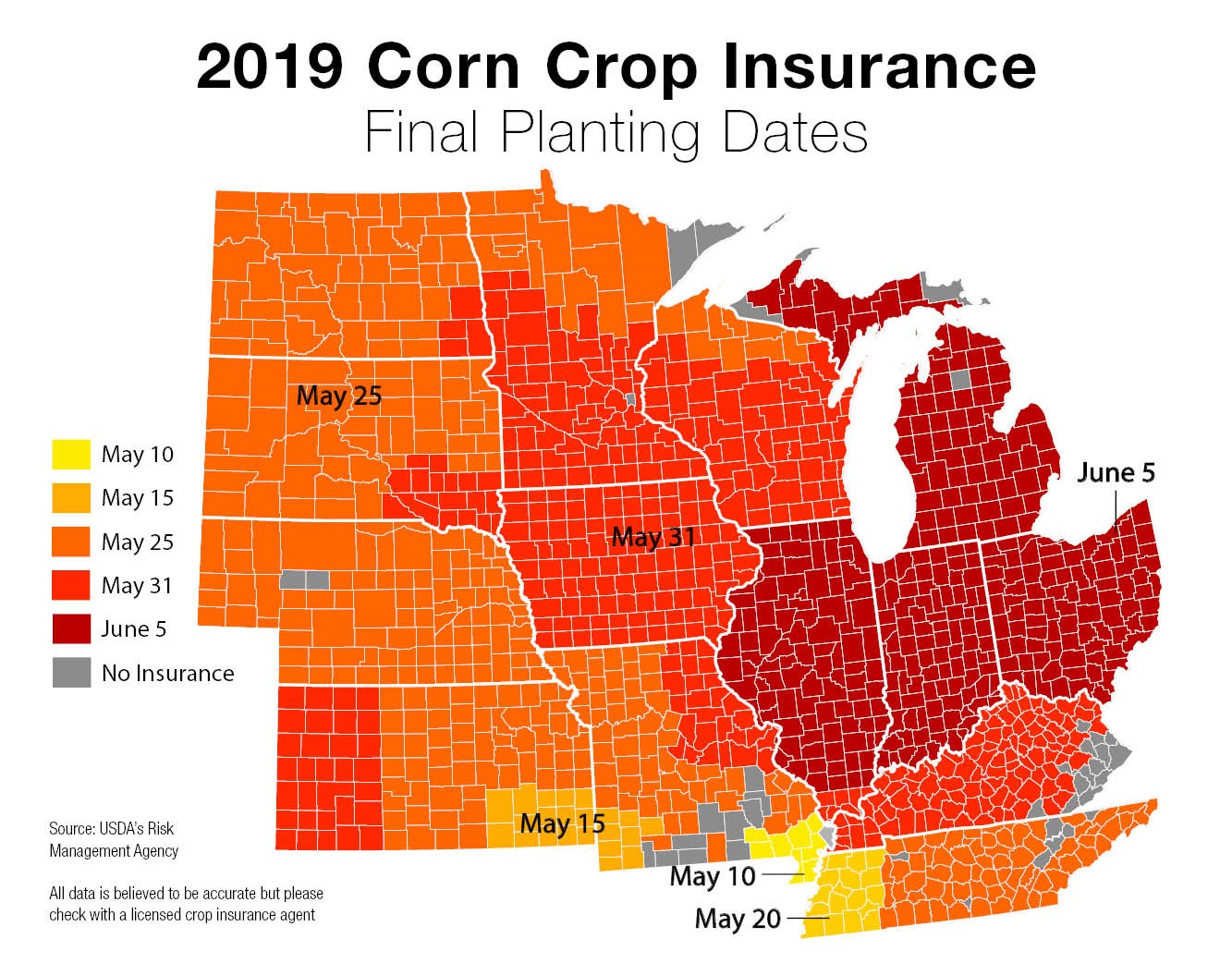
This article is written by Sara Schafer, editor of Top Producer magazine, and was originally posted on AgWeb.com.
As we near the middle of May, many farmers are running out of time to get their crops in by the crop insurance final planting date. Are you weighing the options of switching up crops or maybe just not planting a field at all?
Take the time to calculate out the option of taking a prevent plant claim, says Jamie Wasemiller, Gulke Group senior market analyst and crop insurance expert.
And, do that fast. Depending on the area, final planting dates have already passed or are May 25, May 31 or June 5 for corn. For soybeans, the dates are June 10, June 15, June 20, June 25 or June 30, depending on your location.


With spring insurance prices of $4.00 for corn and $9.54 for beans, Wasemiller says, along with the bearish nature of futures prices moving forward, the indemnities provided by prevent plant could be close to or even higher than profits from producing a crop on those acres.
“I do think prevent plant is a viable option this year,” he says.
For farmers with unplanted acres, covered by insurance, Wasemiller provides four options. For these examples, assume the farmer is planting corn, has an 80% crop insurance coverage level and an APH (actual production history) yield of 180 bu./acre.
Option 1: Submit a prevented planting claim.
With a spring insurance price of $4.00, that gives you a default insurance guarantee of $576 per acre. ($4.00 x 180 x 80% = $576). If you multiple $576 by 55% to calculate your prevent plant indemnity, it comes out to $317. This may not be ideal, but a farmer should be able to make that work on a portion of their acres, Wasemiller says.
No other crops can be planted on these acres other than approved cover crops in order for the producer to receive the full 55% prevented planting guarantee. And, in this instance, prevented planting acres will not affect your APH.
Option 2: Do not submit a prevented planting claim and plant a second insurable crop before the late planting period.
If a second crop is planted before the final plant date, coverage for the second crop will replace the coverage for the first. “Essentially those corn acres are now going to soybeans and it is kind of like corn never existed,” Wasemiller says. Therefore, no prevented planting payment will be issued for the first crop.
Option 3: Submit a prevented planting claim and plant a second insurance crop after the late-planting period.
If the second crop is insured and is planted after the late planting period, a payment of 35% of the prevented planting payment will apply to the corn acres, Wasemiller says. Also, only 35% of the original premium for the policy on those acres will be charged.
“Keep in mind that depending on when you switch from corn to insured soybeans, you may also run into late planting period rules for the soybeans if they are planted after their final planting date,” he says.
In this case the prevented planted acres will receive a yield equal to 60% of the approved yield, which will now be part of the 10-year history.
Option 4: Plant the original crop during the late planting period.
Of course, Wasemiller says, farmers also have the option of planting their crops after the final planting date. The late plating period lasts for 20 to 25 days after the final planting date, depending on the state. “Acres planted within this window will receive 1% less insurance coverage per day,” he says. “Acres planted after the late planting period can still be insured at the prevented planting level which is 60% of the original guarantee.”
He reminds that the late planted acres will be combined with any acres planted before the late planting window to determine your average guarantee if you utilize the enterprise unit discount.
Since crop insurance is so farm-specific, Wasemiller says, any of these options could be correct for you. Be sure to ask for input from your crop insurance advisor.
For 2019, Wasemiller suggests some over others. “My first choice is to take the full prevent plant claim,” he says. “My second choice is to continue to plant corn for up to a week after the final date.”
Also, ask what your neighbors plan to do. “Don’t be that lone wolf in your area taking prevent plant. Adjusters and underwriters are getting a little more picky about quickly approving prevent plant acres.”
If the majority of people in your area are getting their acres in, Wasemiller says, it may be best to have an adjustor come out to help determine if you land is eligible for a prevent plant claim.


 and then
and then